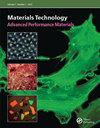Silybin-based herbal nanocarriers: an advancement in anticancer therapy
IF 2.9
4区 材料科学
Q3 MATERIALS SCIENCE, MULTIDISCIPLINARY
引用次数: 2
Abstract
ABSTRACT Silybin is a key bioactive component of silymarin that display health-promoting actions in many chronic diseases. However, its clinical applicability is curtailed by its inherent issues like low aqueous solubility, poor bioavailability, high metabolism, fast elimination, and poor penetration in intestinal epithelial cells. In this context, nanotechnology plays a crucial role to address several issues of the broad range of bioactives. In this review, the authors have discussed the anticancer mechanism of silybin and its synergistic combinations. Further, it summarizes the emerging nanocarriers used to deliver silybin alone or in combination like lipid-based, polymeric micelles, polymeric nanoparticles, carbon nanotubes, gold nanoparticles, nanoemulsion, nanosuspension, and hydrogel. Besides, it presents the repercussions of nano-silybin and the present scenario of clinical studies in the field of cancer. The application of nanotechnology brings the opportunity for silybin to be used as an alternative for effective therapy in cancer management in near future. ABSTRACT基于水飞蓟宾的草药纳米载体:抗癌治疗的进展
水飞蓟宾是水飞蓟素的重要生物活性成分,对许多慢性疾病具有促进健康的作用。然而,其固有的水溶性低、生物利用度差、代谢高、消除快、肠上皮细胞渗透性差等问题限制了其临床适用性。在这种情况下,纳米技术在解决广泛生物活性的几个问题方面起着至关重要的作用。本文就水飞蓟宾的抗癌作用机制及其增效组合作一综述。此外,它还总结了用于单独或联合递送水飞蓟宾的新兴纳米载体,如脂基、聚合物胶束、聚合物纳米粒子、碳纳米管、金纳米粒子、纳米乳液、纳米悬浮液和水凝胶。此外,还介绍了纳米水飞蓟宾在癌症领域的影响和临床研究的现状。纳米技术的应用为水飞蓟宾在不久的将来作为一种有效的癌症治疗方法提供了机会。摘要
本文章由计算机程序翻译,如有差异,请以英文原文为准。
求助全文
约1分钟内获得全文
求助全文
来源期刊

Materials Technology
工程技术-材料科学:综合
CiteScore
6.00
自引率
9.70%
发文量
105
审稿时长
8.7 months
期刊介绍:
Materials Technology: Advanced Performance Materials provides an international medium for the communication of progress in the field of functional materials (advanced materials in which composition, structure and surface are functionalised to confer specific, applications-oriented properties). The focus is on materials for biomedical, electronic, photonic and energy applications. Contributions should address the physical, chemical, or engineering sciences that underpin the design and application of these materials. The scientific and engineering aspects may include processing and structural characterisation from the micro- to nanoscale to achieve specific functionality.
 求助内容:
求助内容: 应助结果提醒方式:
应助结果提醒方式:


